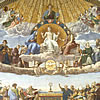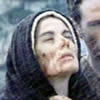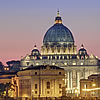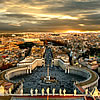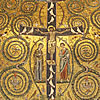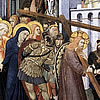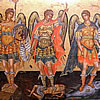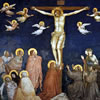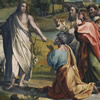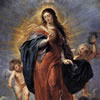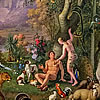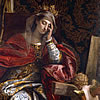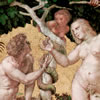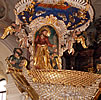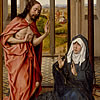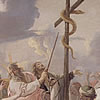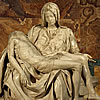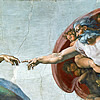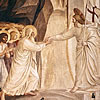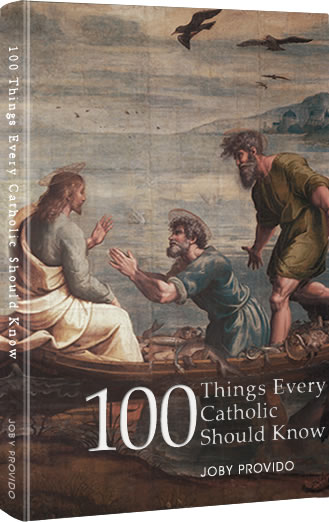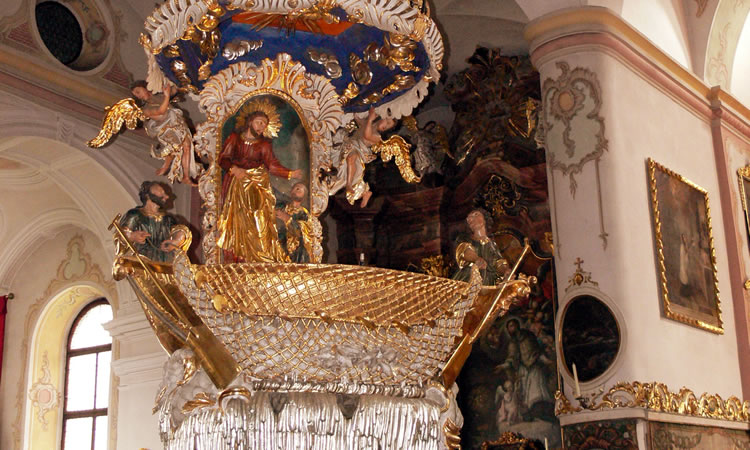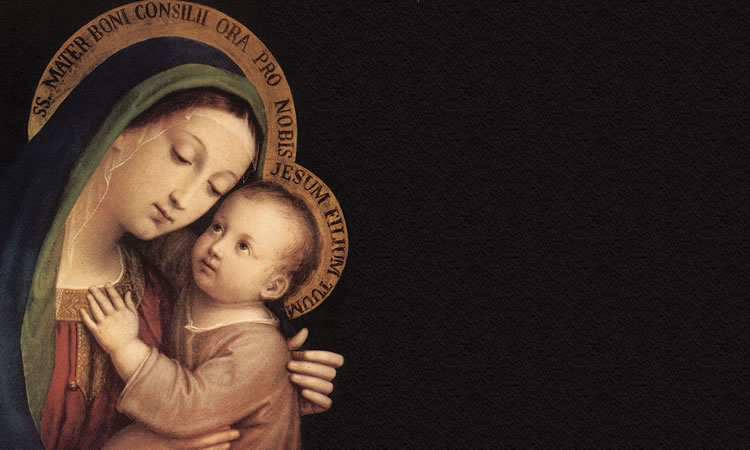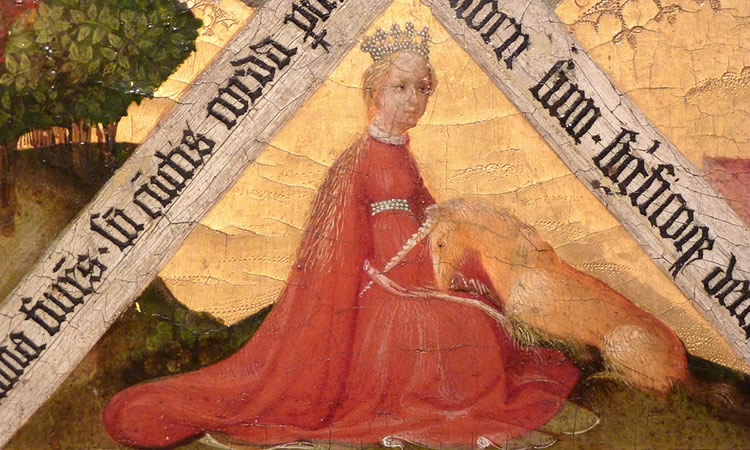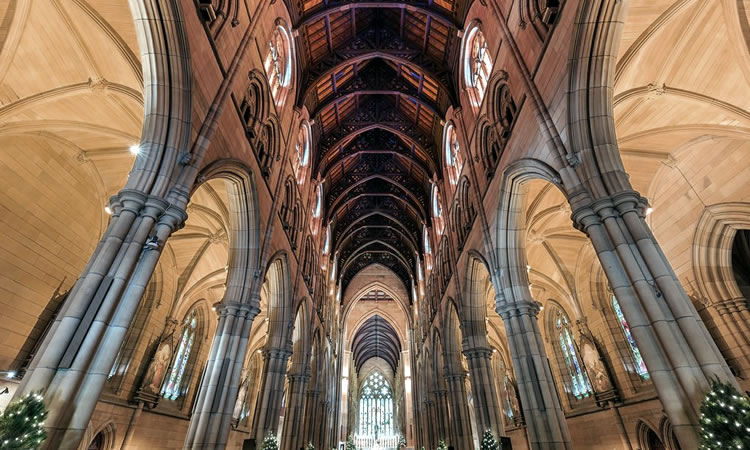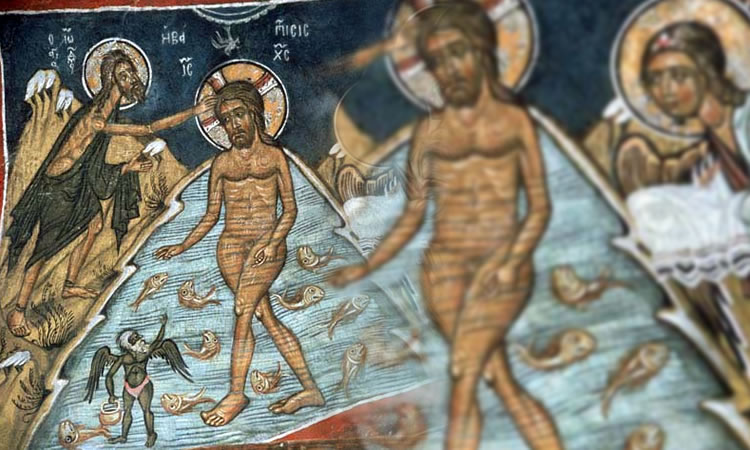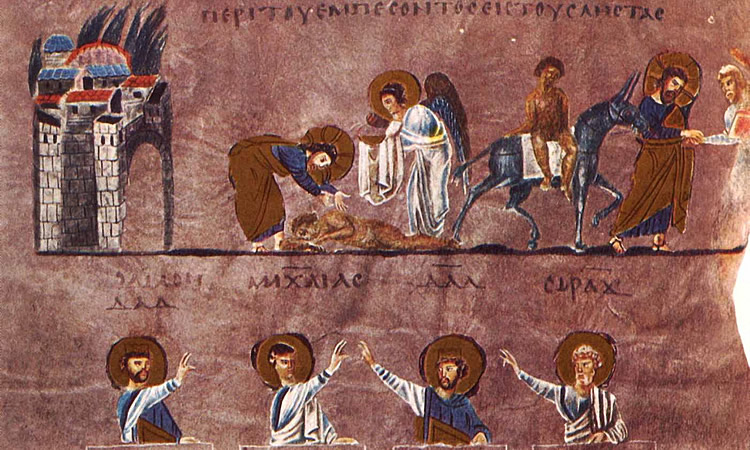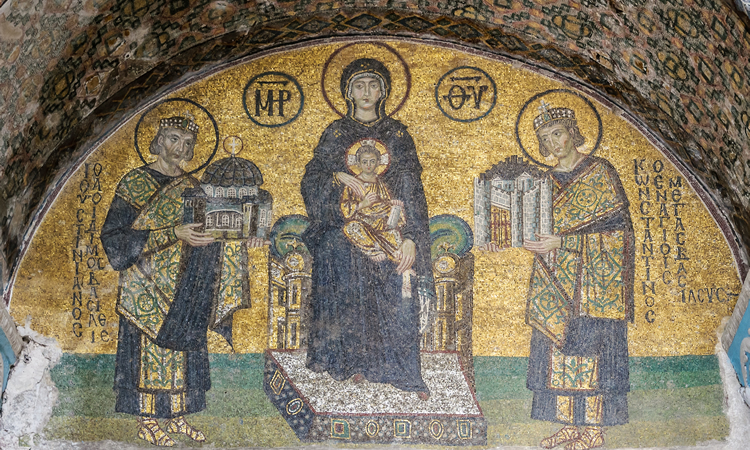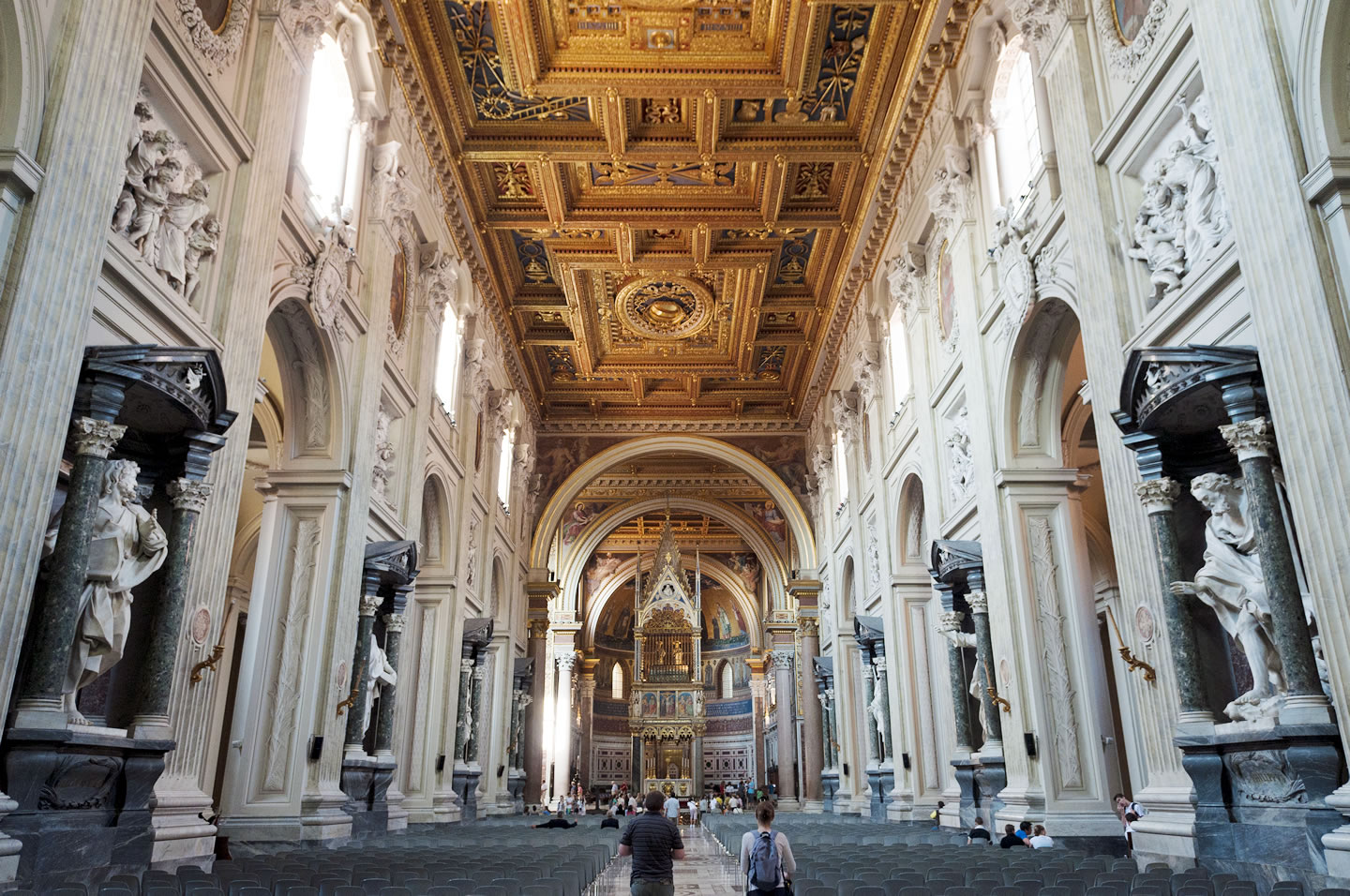

St. John Lateran Basilica
We have feast of saints and important events in the life of Christ, but one might think it odd that every year we celebrate the feast of the Dedication of the Lateran Basilica. After all, why have a feast for the dedication of a church?
It has to do with what that structure symbolizes – the “Building of God.” There have been many metaphors for the Church. You’ve probably heard that it is “the barque of Peter”, or the “Body of Christ”, or “the Bride of Christ.” One metaphor is that it is God’s Building.
In the Old Testament, the Temple was the holiest place for the Jews. Although King David initiated the idea of building God a house, it was King Solomon, his son, who finished it. So the central place for Judaism is the Temple where sacrifices are made to God. In the inner sanctuary, called the Holy-of-Holies, God “resided” on top of the Ark of the Covenant. The Old Testament would picture this presence as a cloud.
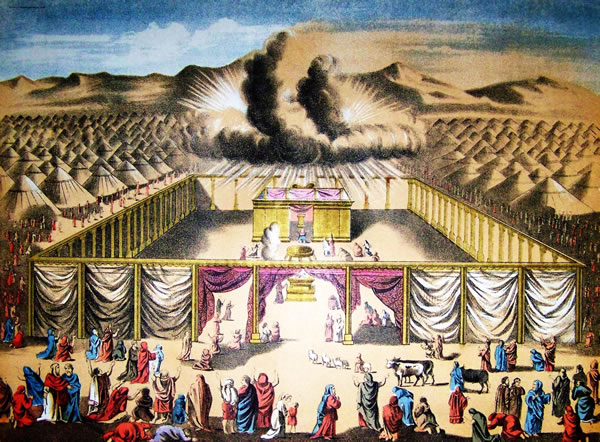
An illustration of God’s presence above the Ark of the Covenant in the Holy-of-Holies.
In the first reading of this feast, we recount Ezekiel’s prophecy of water flowing from the side of the Temple. (Ezekiel 47:1-12) This water would flow to the rivers and seas and give life to everything it touched. It is a foreshadowing of Christ’s body on the cross: pierced where blood and water flow from his side. And through this blood and water redeems for us eternal life.
In the second reading, we read Paul’s letter to the Corinthians reminding them that they are God’s Building. In the year 70 A.D. the Romans quashed a rebellion in Jerusalem and they completely destroyed the Temple. Today nothing is left of it except the Wailing Wall. So this metaphor from St. Paul means to explain how we, the members of the Church, are the stones that makeup God’s new Temple – that Building of God. It perfectly fits together with St. Peter’s exhortation: “and like living stones, let yourselves be built into a spiritual house to be a holy priesthood to offer spiritual sacrifices acceptable to God through Jesus Christ.” (1 Peter 2:5)
In the Gospel, John recounts the episode in the Temple where the Pharisees were demanding a sign from Jesus to explain his authority. Christ said, “Destroy this Temple and in three days I will raise it up.” Saint John was very quick to say, “But he was speaking about the temple of his Body.” Scholars tell us that the Greek word that Christ used to refer to the “temple” was that of the inner sanctuary – the Holy-of-Holies where the presence of God dwelt.
One can easily discern that the readings for this feast were chosen carefully to show us that:
- The new Temple is the Body of Christ, the Church, from where we continue the daily offering of acceptable Sacrifice to God in the Eucharist,
- The Church is not a thing but an organism. This new House of God (as Pope Sylvester referred to the Basilica during its dedication in 324 AD) is not composed by stone, but by living stone – we who make up the Church
So what does this have to do with the Basilica of John Lateran in Rome? Catholic Bishops are assigned a Cathedral. Basically, it is a church with a chair in it that symbolizes the apostolic office (seat) of the Bishop. The word for chair in Latin is “cathedra”, which is how the word cathedral gets its name.
The Papal Basilica of St. John Lateran in Rome is the official seat of the Pope. Therefore it outranks all other churches, even that of St. Peter’s Basilica. It is sometimes called the Cathedral of the Church of Rome, and Mother Church of the whole world.
For Catholics, we believe that the Pope is the direct successor of Saint Peter – the rock. When Peter died, St. Linus was elected to take his position. After him it was St. Anacletus, and then after him St. Clement I and so forth until our present Pope of today. We can see that there is an “apostolic succession”. This simply means we can trace the lineage of any Catholic bishop, and it will end with one of the Apostles. That makes sense because Christ laid the foundation of his Church upon the apostles. So if the Church is a “building made of people”, the apostles are the foundation, and Peter is the rock in that foundation. In Matthew 16:18, when Jesus told Simon that he is the rock upon which he will build his church, the metaphor must have been clear to the apostles who must have remembered the Temple, which is built upon a large rock. (They would have also remembered Christ’s parable of the House Built on Rock (Matthew 2:24-27), whose context is similar.)
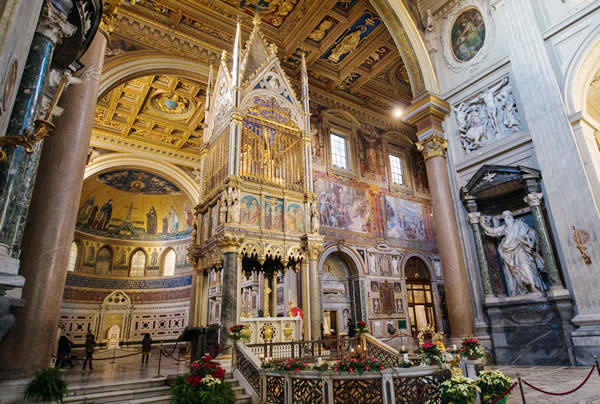
The Baldacchino above the main altar where relics of St. Peter and St. Paul are kept.
The Basilica of Saint John Lateran symbolizes all these. In fact the architecture shows it in a visual sense. Above the main altar is a baldacchino (canopy) that contains the head of St. Peter. On both sides of the nave are statues of all the apostles. (See the main photo on top.) They are each under an arch that supports the structure of the entire building. In a sense, it is a visual representation of showing that the Apostles are the foundation that supports the church – as Christ intended. Thus, the Basilica reminds us that Christ instituted a church that is both human and divine just like he is. She is human for we are the cells that make her up, and she is divine for its soul is the Holy Spirit. It is a wonderful gift, and we should act like members of Christ’s body. Christ showed us how; he cleaned up the Temple, which was an architectural symbol of our relationship with God. We, then, are called to also clean up whatever it is that clutters or impedes our relationship with God.
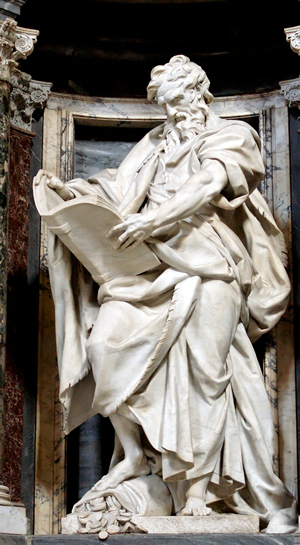
A close-up of St. Matthew in one of the arches. Here he is depicted holding his Gospel, and a bag of coins by his feet. Since he was a tax-collector involved with money, he is the patron saint of bankers.



